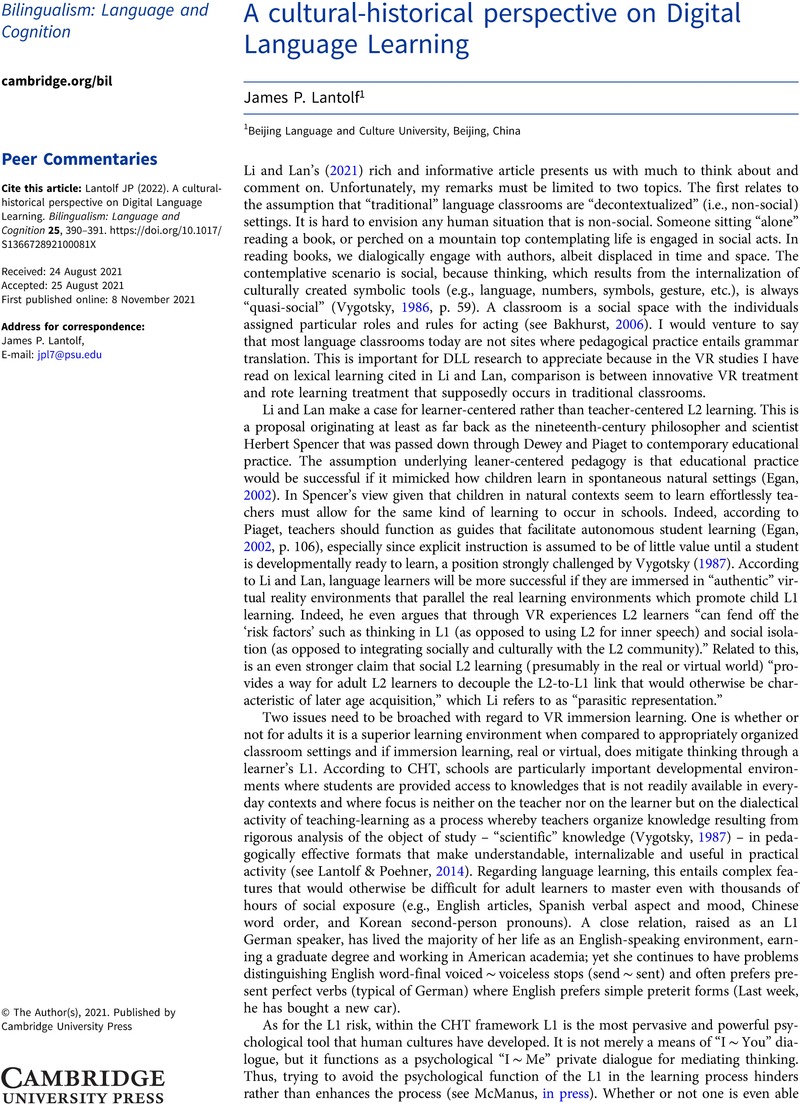Crossref Citations
This article has been cited by the following publications. This list is generated based on data provided by Crossref.
Li, Ping
and
Lan, Yu-Ju
2022.
Understanding the Interaction between Technology and the Learner: The Case of DLL.
Bilingualism: Language and Cognition,
Vol. 25,
Issue. 3,
p.
402.
Lantolf, James P.
and
Xi, Jiao
2023.
Digital Language Learning: A Sociocultural Theory Perspective.
TESOL Quarterly,
Vol. 57,
Issue. 2,
p.
702.
Kassim, Hafizoah
Kassim, Asiah
Khamis, Nor Yazi
Jatin, Norhazwanie
Hussin, Anealka Aziz
and
Uthayakumaran, Arulselvi
2023.
Creative Digital Language Learning Environment: A Model to Foster Creative Experiences for Language Learners.
p.
479.


